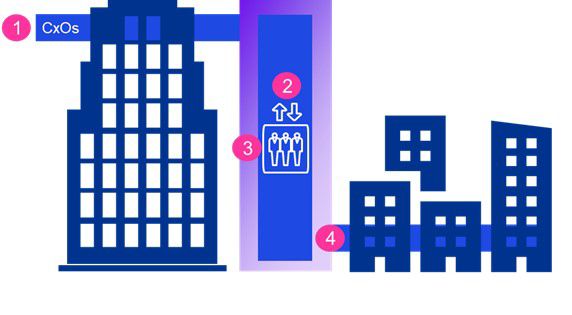More than two-thirds of business transformations fail to deliver growth and profitability {ref: The playbook for a successful business transformation (kpmg.us)}, which is attributed to a lack of alignment of technology with required business outcomes and an inability to translate transformation efforts into compelling executive language, among other reasons {ref: 12 Reasons Your Digital Transformation Will Fail (forbes.com)}. In the uncertain post-COVID world, where organizations face energy price pressures, ongoing layoffs, and labor scarcity, it has become increasingly important for them to effectively execute their digital transformation plans. Historically, enterprise architecture (EA) has been responsible for aligning business strategies and operating models with IT transformation plans. This article argues that, now more than ever, EA is a critical function for any company undergoing digital transformation. It proposes four practical next steps to supercharge EA to help companies achieve their digital strategies.
EA is an essential function to support digital transformation
EA provides a blueprint for aligning an organization's business processes and IT with its strategic objectives and goals, ensuring that technology investments are aligned with business needs, and that operations are optimized for efficiency and effectiveness. An EA department is responsible for overseeing the holistic business, technical, and organizational development of a company. It can help companies identify new market opportunities, optimize, or phase out business processes, and proactively re-allocate internal resources based on market and industry trends – all critical questions to answer when accelerating digital transformation programs.
Start by implementing the following four actions to improve your EA function
Gregor Hohpe coined the concept of an ‘architecture elevator’ as an analogy for how architecture can successfully connect with different levels within a company {ref: The Transformation Architect - The Architect Elevator}. The elevator connects business capabilities from different operational and tactical ‘floors’ to the business strategy and operating model.
To ensure that this elevator functions properly, organizations should take the following steps:
Ensure that there is an EA presence at the executive level
Make EA a driving force behind digital transformation execution
Extend the skills of the EA team with a focus on business and change expertise
Allow EA to navigate your business ecosystem as well as your technology landscape

Action 1: Ensure that there is an EA presence at the executive level
To realize the full potential of EA, it is essential to incorporate an EA perspective at the C-level. To embed EA at the executive level, companies should clearly define the role of EA and establish direct reporting lines between EA leadership and senior executives. This will ensure that EA can provide specialized expertise and strategic recommendations for change. Senior executives should be engaged in the EA process by receiving regular updates and providing guidance on the next steps in digital transformation roadmaps.
Action 2: Make EA a driving force behind digital transformation execution
Enterprise architects play a vital role in managing an organization's overall change capability. To support business transformation, the organization's capabilities must be continuously evolving and consciously shaped. However, managing change is more than just drafting conceptual target state designs; it requires the active involvement of the EA function in the execution of digital transformation programs across all levels of the organization. To achieve this, EA leadership should be involved in the governance of transformation investment plans and actual execution activities.
Action 3: Extend the skills of the EA team with a focus on business and change expertise
To address the talent shortage, companies should focus on architecture-related skills that are more commonly available in business administration, change, and communication domains, or re-skill internal employees such as senior business analysts, into EA roles. Some IT knowledge is beneficial, but it doesn't have to be significant if the company is willing to invest in proper training and personal development. An as-a-service model can be used to provide candidates with temporary hands-on experience and knowledge to accelerate the process and address current EA tasks.
Action 4: Allow EA to navigate your business ecosystem as well as your technology landscape
Digital transformation is not just about changing the internal processes; it also involves external stakeholders and business ecosystems. Going forward, we anticipate that the enterprise architecture function shift their focus from internal architecture towards ecosystem architecture to address the organization's ability to deliver value across its full value chain.
Given the complexity of business ecosystems, there is currently no systematic methodology for navigating digital transformation across ecosystems, and the exact role of EA in the process is still evolving. Therefore, identifying and effectively managing the value chain of complex services as part of the EA function is an important next step in maintaining partner and product synergies, ensuring agility, and surviving in turbulent times.
Bottom line:
Maximizing the potential of digital transformation requires enterprise architecture to play a leading role in aligning business processes and IT with strategic goals. Organizations can facilitate this by defining a clear EA value proposition at the C-level, empowering EA to drive change, modernizing EA skills and stepping into the realm of business ecosystems as their key enterprise architecture priorities.
Discover more
Connect with us
Alex van Engelen
Manager, Digital Transformation
KPMG in the Netherlands
Jesse Struick
Manager, Digital Transformation
KPMG in the Netherlands

We will keep you informed by email.
Enter your preferences here.



